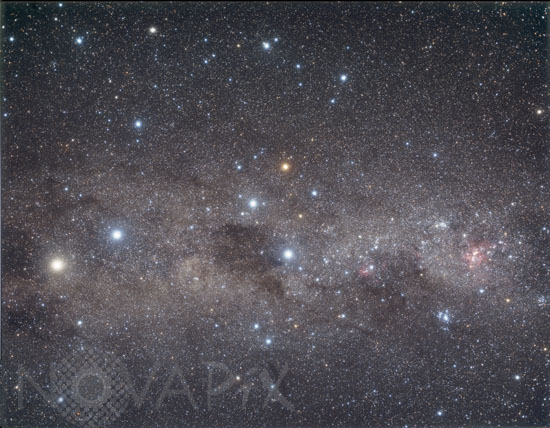Photo Agency - Astronomy - Space - Nature

The Southern cross
author: A.Fujii/David Malin Images/Novapix
reference: a-cst26-00017
Image Size 300 DPI: 51 * 40 cm
Crux, the Southern Cross, is the smallest constellation in the sky yet one of the most distinctive, at least to those of us who live in the southern hemisphere. It was once part of Centaurus, where the bright stars Acrux and Mimosa could easly be imagined as the rear hooves of the rearing mythical centaur. However, when Christian sailors began to explore southwards in the 16th century, this memorable asterism took on a new significance. The cross appears on the national flags of several southern hemisphere countries, including Australia, though it can be seen on the southern horizon from the tropic of Cancer, 23.5 degrees north of the equator. Alongside the Southern Cross is a very distinctive dark shape known as the Coalsack, much used by southern hemisphere astronomers as an indicator of a dark sky, especially if the sixth magnitude star embedded in it is visible. The long axis of the southern cross points towards the south celestial pole, so the cross itself acts as a very convenient circumpolar clock, compass and calendar.
Â
Contact : Stéphane Aubin +33-(0)9-51-26-53-76
© Novapix - All rights reserved


